Causes of Autism, What is Autism, Diagnosis, Treatment and Prevention
 For better prevention of autism, where we need to understand what are the causes of autism, first we need to understand what is autism.?
For better prevention of autism, where we need to understand what are the causes of autism, first we need to understand what is autism.?
What is Autism Spectrum Disorder?
The neurological abnormalities that underlie autism spectrum disorder (ASD) make it a developmental impairment. A hereditary issue is believed to account for a portion of ASD cases.
Other causes of autism are not yet known. Researchers have hypothesized that a combination of factors alters the standard patterns of human development, leading to ASD. We can learn much more about these factors and their effects on those with ASD.
Individuals with ASD may differ from the norm in various ways, including how they act, talk, interact, and learn. Nothing about their appearance distinguishes them from the general populace. Ability levels among individuals with ASD might range widely.
Some people with ASD may be highly communicative, while others may not use words at all. While some individuals with ASD require extensive assistance, others can function independently in employment and daily life.
The symptoms of autism spectrum disorder (ASD) typically appear before age three and can get better with time. Some children exhibit signs of autism spectrum disorder as early as the first year of life.
Sometimes, symptoms may not appear until a child is older than 24 months. While some children with ASD progress towards their developmental goals until 18-24 months old, others may regress or never catch up after this age.
Young adults on the autism spectrum (ASD) may struggle to form and maintain friendships. Communicating with adults and learning appropriate social and behavioral norms in school and the workplace.
As anxiety, sadness, and ADD/ADHD are more common in people with ASD than those without the disorder, these individuals may attract the attention of medical professionals.
Causes of Autism
It’s only normal to want answers when a loved one you care about is diagnosed with autism spectrum disorder. We still don’t have all the information we need.
Autism is diagnosed by carefully observing specific characteristics; no established biological test exists for the disorder. We may one day learn that the wide range of symptoms and severity of autism results from a collection of conditions rather than a single disease.
Although the root cause of autism has yet to be identified, studies point to a convergence of developmental, genetic, and environmental factors. We have a firm grasp on what does not contribute to autism.
Why Does Autism Occur, Exactly?
Extreme Heritability in Autism
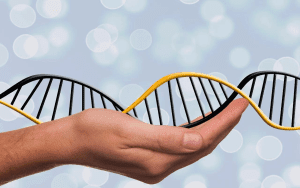

These results (or lack thereof) prompted researchers to rethink autism as a spectrum disorder with multiple potential causes. They began categorizing it as a group of diseases with overlapping behavioral signs.
This revised perspective on autism has been constructive in identifying distinct forms of the disorder. For instance, autistic behaviors can be traced back to underlying genetic or chromosomal problems.
This particular category pertains to chromosomal abnormalities, specifically those responsible for causing Down syndrome. Individually, no chromosomal abnormality causes autism in more than 1% of cases, but together, they cause autism in about 10%-15% of cases.
It is yet unclear whether specific genetic defects may be at play in the remaining cases of autism. For two reasons, this is the case.
The first is that the relevant portions of DNA are intricate. New methods of investigation into them have been developed by scientists.
The second is that the mutations will likely be highly uncommon and convoluted. The DNA strands that comprise our chromosomes are more than 3 billion long base pairs. Due to the vast number of possible base pairs, scientists need to examine the DNA of a sizable sample of persons with autism.
Compared to the general population, families with one autistic kid are more likely to have another autistic child. There is an approximate 1 in 5 probability of having another afflicted child.
An individual with autism is more likely to have relatives who exhibit autistic symptoms.
Studies of identical (monozygotic) twins have shown a substantial risk of autism in the other twin if the first twin has the disorder (77% in one extensive study). Fraternal (dizygotic) twins have a substantially lower risk because they share no genetic material.
You may get a lot of information about the relationship between autism and genes if you do a search on Google. Hundreds of ‘risk genes’ and pathways have been identified, some involving multiple genes in combination with environmental influences, and this complexity is reflected in the genetics of autism.
What is Bipolar II Depression? Psychopharmacologic Treatment of Bipolar II Depression
The Age of the Parents May Play a Role.
There is mounting evidence that parents older than 45 are likelier to have a kid diagnosed with autism. Parents of a certain age are statistically more likely to produce children with special needs. While heredity certainly plays a role, older moms also face increased risks during pregnancy and delivery.
Studies have indicated a correlation between advanced paternal age, specifically those who father children after age 50 and have more risk of de novo mutations and autism spectrum disorder in their offspring.
It is also suggested that having an older parent, especially an older father, raises the probability of having a kid with autism. Age is associated with an increase in the proportion of sperm that have acquired new mutations.
Birth and Pregnancy


Brain development may be impacted most significantly during pregnancy and, to a lesser extent, early infancy. Prenatal infections with bacteria or viruses have a relationship to an increased risk of autism, but this is still just a minor contributor.
However, no solid evidence links these or other maternal variables (such as folic acid insufficiency, gestational diabetes, or certain antidepressants) to autism in the kids.
However, there appears to be a protective effect from taking prenatal vitamins.
According to the Scientists and Researchers, Which Fat is The Best for Brain Health?
Natural Factors
Autism has been linked to exposure to several environmental variables in utero. Prenatal infections with bacteria or viruses are related to an increasing risk of autism in the child. The mother’s immune reaction may harm the fetus’s growing brain or be infectious. It is plausible for microorganisms to infiltrate the placenta and instigate an infection in the developing fetus.
There is also some speculation that maternal folic acid insufficiency at conception, gestational diabetes, and the use of certain antidepressants during pregnancy are all linked to autism in offspring, but no firm evidence supports these hypotheses.
The environmental factors contributing to autism have been studied more intensively in the past decade. Despite much research, a definitive environmental cause of brain development has not been identified.
Researchers have been trying to pin autistic characteristics on a single underlying brain abnormality for quite some time. Unfortunately, very few studies have really succeeded in discovering brain traits that are shared by diverse people who have been diagnosed with autism. Thus, this hope remains unfulfilled.
This could reflect the challenges of understanding the brain or an additional sign that autism has several causes.
Today, scientists employ various ingenious methods—from magnetic fields and X-rays to radioactive chemicals—to better comprehend brain structure and function. However clever these techniques may be, they fail to provide a complete picture of the mind’s incredible complexity.
Autism. Additional Biological Variables
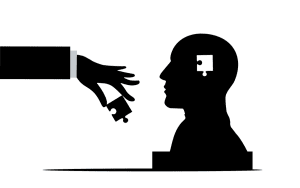

Preliminary data suggests that some people with autism are exposed to higher testosterone levels in utero, but this is not the case for everyone. The brain, which is especially susceptible to variations in hormone levels, can be damaged by excessive amounts of testosterone in the bloodstream and lead to cell death.
It has been hypothesized that abnormal brain development due to elevated testosterone levels may contribute to autistic traits in young children. This theory has yet to be established. Again, it’s clear that prenatal exposure to high testosterone levels isn’t the sole cause of autism.
The elimination or alteration of beneficial gut flora has been proposed by several researchers as a possible cause of autism.
Scientists have also focused extensively on the possible connection between gastrointestinal (“gut”) issues and autism. It is generally accepted that thirty per cent and fifty per cent of people with autism also suffer from severe gastrointestinal problems such as diarrhoea, constipation, and irritable bowel.
Outside Factors
The root of ASD is still a mystery. The most recent studies show that multiple factors contribute.
Possible causes of autism spectrum disorder (ASD) include:
- being directly affected by an autistic relative
- changes in the DNA sequence
- genetic abnormalities such as fragile X syndrome
- coming from a generation ahead
- Birth weight too low
- Physiological Disruptions
- toxic metals and chemical compounds in the environment
- viral infections in the mother’s past
- Prenatal Valproic Acid or Thalidomide (Thalomid) Exposure
- Environmental and genetic factors may be at play in the emergence of autism spectrum disorder.
But there are several other sources, both. Concluding that immunizations do not cause autism spectrum disorder.
A disputed study in 1998 suggested that the measles, mumps, and rubella (MMR) vaccine might increase the risk of autism. That study, however, has been discredited by subsequent studies and was ultimately withdrawn in 2010. Find out more about the causes of autism and the ways to reduce your risk.
What Does Not Result in Autism?
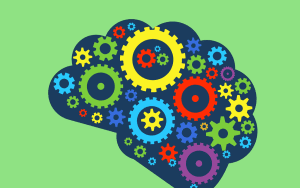

Autism Does Not Result from Poor Parenting.
From the 1950s through the 1970s, autism was considered a mental condition and often blamed on emotionally distant moms.
Thankfully, research has disproven the ‘the refrigerator mother’ theory, and autism is now understood as a condition of brain development with genetic underpinnings. Please know that nothing you did or said as a parent contributed to your child’s autism.
Earlier Onset of Respiratory Infections in Children, According to the CDC.
Incorrect: Autism is Caused by Vaccines.
Vaccines have been effectively disproven as a possible cause of autism in dozens of scientific investigations. Initially, there were two leading causes for alarm: mercury levels and the MMR vaccine (which protects against measles, mumps, and rubella).
There is no evidence that vaccines cause autism, according to a 2014 meta-analysis that pooled data from 10 trials involving over 1.2 million children.
After careful consideration, the World Health Organization has unanimously agreed. There is no correlation between the two. Unfortunately, the concept is still held by some very outspoken anti-vaccination campaigners online.
Schedule an appointment with your child’s paediatrician or family doctor if your worries regarding immunizations persist. Keep in mind that Vaccines Prevent Deaths!
Symptoms
Some infants with autism spectrum disorder display symptoms such as
- a lack of interest in their carers,
- a failure to respond to their names,
- And decreased eye contact.
- Some kids grow and learn generally for a while, but then they retreat, become violent,
- Or need to remember what they already know regarding language. By the age of 2, signs are typically noticeable.
- Each child with an autism spectrum condition will likely exhibit their own distinct behavioural pattern and level of severity, ranging from severely impaired to very able.
- Other children with ASD experience learning difficulties and others show evidence of having a lower-than-average IQ.
- Still, others with the illness are of average or above-average intelligence but struggle in everyday settings due to communication and social difficulties.
The severity of a child’s condition might be hard to gauge because every youngster experiences different symptoms. The severity of impairments and their functional consequences are usually taken into account.
Effects of Poor Sleep on Cardiovascular Health
Indicators of Autism Spectrum Disorder are Listed Below.
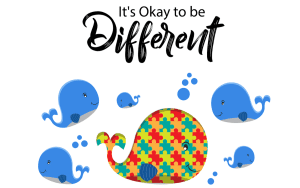

Interaction and Conversation Among People
Any or all of the following symptoms may be present in a child or adult with autism spectrum disorder, indicating difficulties with social interaction and communication:
- Shows signs of not hearing you or not responding to your name
- RefuseThey refuse to be held and play independently, immersing themselves in their own world.
- Lacks facial expression and makes awkward eye contact.
- Fails to speak, needs help communicating, or needs more speaking ability.
- Needs help initiating or maintaining a conversation or only does so to ask for something or identify an object.
- Speaking in an unusual tone or cadence using a singsong voice or robotic speaking.
- uses words and phrases at face value without understanding their context or significance
- Seems unable to process even the most basic information
- Neither displays nor seems to understand the emotions of others.
- Do not bring items to demonstrate interest or point at them.
Approaches a Social Encounter Inappropriately, Whether Through Passivity, Aggression, or Disruption.
- Lacks the ability to read nonverbal signs such as emotions, body language, and tone of voice.
- Consistent actions Limiting and repetitive patterns in a person’s behaviour, hobbies, or activities are common symptoms of autism, which can affect children and adults.
- Acts out a routine, including rocking, spinning, or clapping, acts in ways that could result in injury to oneself, such as biting or slamming one’s skull, habitually reacts negatively to even little disruptions in routine demonstrates unusual. \
- Rigid or exaggerated body language and struggles with coordination or bizarre movement patterns like clumsiness or walking on toes.
- Focuses on the superficial aspects of an object, such as the moving parts of a toy car, and misses the bigger picture.
- Is hypersensitive to sensory inputs like light, music, or touch but possibly indifferent to painful or hot stimuli.
- Doesn’t play pretend or act out imaginary scenarios exhibits an unhealthy preoccupation with one particular activity Eats only a limited variety of foods or refuses foods because of their texture.
Additional Symptoms
Autistic individuals may present with additional symptoms, such as
- delayed movement,
- language,
- or cognitive skills,
- seizures,
- gastrointestinal issues such as constipation or diarrhoea,
- excessive worry or stress,
- unusual levels of fear,
- hyperactive,
- inattentive or impulsive behaviours,
- unexpected emotional reactions,
- unusual eating habits or preferences, and unique sleep patterns.
Better Mental Health is Crucial For A better Family and Society
“Stimming
“Stimming” refers to self-stimulating behaviours, which often involve repetitive movements or speech.
Examples of stimming may include
- clapping hands,
- rubbing an object,
- Or repeating a phrase.
- While stimming is frequently associated with autistic individuals,
- It is worth noting that almost everyone engages in stimming, such as scratching their hands together or biting their nails.
- For autistic individuals, stimming may occasionally interfere with daily life or lead to physical harm.
However, it can also serve as a helpful coping mechanism for managing sensory overload or navigating uncomfortable situations, among other things.
Is It Time To See A Doctor?
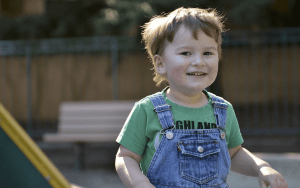

Infants develop at their own pace, and the suggested ages in some parenting guides are only guidelines. However, children with ASD typically show evidence of impaired development before the age of 2 years.
Talk to your doctor if you’re worried about your child’s progress or suspect he or she has autism spectrum disorder. There may be a connection between the disease and other developmental problems based on the symptoms.
When there are noticeable lags in language acquisition and social abilities, doctors may suspect autism spectrum disorder. Suppose your kid exhibits any of the following.
In that case, your doctor may suggest a battery of developmental tests to determine the presence or absence of delays in cognitive, linguistic, and social skills:
- Hasn’t shown any signs of happiness after 6 months
- By 9 months, he shows no signs of mimicry in either tone or expression.
- Doesn’t make any noises by the age of a year
- Doesn’t point, wave, or make any other kind of motion by the age of 14
- By 16 months, he or she has yet to say a single word.
- By 18 months old, he shows no signs of playing “make-believe” or pretend.
- Until 24 months from now, he doesn’t talk in two-word sentences.
- Loses the ability to communicate or interact socially at any age
Correlation Between Depression and Alcohol; Use of Alcohol and the Risk of Developing Depression
Types Most Commonly Seen in the Autism Spectrum


Insomniac Disorders
The name “Asperger’s syndrome” is no longer used by medical professionals, despite its widespread use before 2013. The DSM-5 now classifies it as a severe form of autism, or autistic spectrum disorder, instead of mild. Although Asperger’s syndrome is not officially recognized, it is commonly used in the autism community.
Level 1 autism spectrum condition is characterized by above-average intelligence, good verbal skills, and difficulties in social communication.
In most cases, the following symptoms will be present in a child diagnosed with autism spectrum disorder at level 1:
- the rigidity of mind and character
- Difficulties in transitioning between tasks
- Issues with Organising and Prioritising
- Lack of inflexion or emotion in their speech; constant use of the same pitch regardless of context.
- Trouble communicating with others, whether at home or in school
Syndrome Etienne
Rare yet observable in infancy, Rett syndrome is a neurodevelopmental condition. While the disease is more common in females, males can still be diagnosed.
A child with Rett syndrome faces difficulties that permeate nearly every facet of their existence. The good news is that your child can still have a happy and successful life with the proper support. You may spend quality time together as a family and offer encouragement as your child pursues interests outside of school.
The symptoms commonly associated with Rett syndrome are frequently characterized as follows:


- Disruption of regular motion and coordination
- Difficulties in Expressing Oneself
- Some people may have trouble breathing.
- CDD stands for “disintegration disorder in childhood.”
- Delays in the maturation of language,
- Motor abilities, or social function, characterize childhood disintegrative disorder (CDD),
- A neurodevelopmental condition is sometimes known as Heller’s syndrome or disintegrative psychosis.
- Until around the third or fourth birthday, a child’s development in these areas goes smoothly.
- Loss of developmental milestones can be devastating for parents who were unaware their kid was experiencing difficulties associated with autism.
Many Physical And Mental Health Benefits Of Laughter
CDD or Childhood Disintegrative Disorder
CDD has been linked to abnormalities in brain circuitry, but its exact cause is unknown. Boys are more likely to be affected by childhood disintegrative disorder. There will be nine males and one female affected by the illness.
A kid with CDD will have customarily been developing until the onset of the illness when they will begin to experience regressions in more than two areas of development all at once.
Any of the following abilities and skills could be lost by the child:
- If potty training was already in place.
- Words and phrases learned over time
- Adaptive behaviours and social abilities
- A few motor abilities
Disorder of Kanner
Psychiatrist Leo Kanner of Johns Hopkins University first identified Kanner’s disease in 1943, labelling it “infantile autism.”
A classic autistic disorder is how doctors characterize the patient’s condition.
Kanner’s syndrome is a developmental disease characterized by the following symptoms in otherwise healthy children:
- Disconnection from other people’s emotions
- Problems in communication and interpersonal interaction
- Wild utterances
- Preoccupation with material possessions
- High levels of memorization and spatial ability but significant deficits in other areas of learning.
Specified Pervasive Developmental Disorder (PDD-NOS)
Delays in your child’s ability to talk, walk, and use other motor abilities are possible. This form of autism can be diagnosed by watching the youngster and noting any areas of weakness, such as social interaction. People with PDD-NOS are said to have “subthreshold autism,” a phrase for those who exhibit certain autistic traits but not others.
Pervasive Developmental Disorder
Not Otherwise Specified (PDD-NOS) is a subtype of autism characterized by relatively milder symptoms than other forms of autism. The initial presentation of PDD-NOS is often marked by difficulties in social and linguistic development.
Children with ASD and their families can benefit significantly from receiving an early diagnosis.
What is The Relationship Between Grains And Heart Disease
Diagnosing Autism Spectrum Disorder
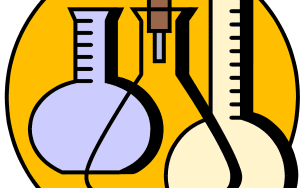

However, diagnosing autism spectrum disorder is not always straightforward. Since there is no reliable laboratory test for it, doctors must rely on observation and the reports of worried parents to make a diagnosis in very young children.
The symptoms of ASD can run the gamut. Someone “on the spectrum” may have significant intellectual impairments. Some are very bright and capable of making their own decisions in life.
Your child’s paediatrician will be the first step in a two-step process to determine where on the autism spectrum your child lies.
The first step in determining if a child has autism is a well-child checkup with a paediatrician. At the 18- and 24-month checkups, all children are evaluated, regardless of whether or not they are showing any symptoms.
Your child will be seen and interviewed by their paediatrician during these checkups. They will inquire about your child’s development and behaviour and your family history (to see if anyone else in your family is on the spectrum).
Here are some things your doctor will want to see:
- How old was your child before they started smiling?
- By 9 months old, were they able to imitate sounds and expressions?
- Have they begun to babble and coo by the age of 12 months?
They will also inquire about the following topics
- Is there anything peculiar or reoccurring about their actions?
- Is it hard for them to look you in the eye?
- Do they communicate with others and swap stories?
- Can they get their attention, and if so, do they provide it?
- Does their voice seem “flat” to you?
- Do they grasp the motivations of others?
- Do they have any sort of environmental sensitivities?
- Do you find it hard to get to sleep?
- Do they get easily frustrated or irritated?
The screening process for your child relies heavily on your responses. If everything is in order and you have no worries, that’s that. If your child’s doctor has any concerns about their development, they will likely recommend that you see a specialist.
The Carbohydrates Disadvantages Discuss in Detail, The Good Carbs vs Bad Carbs
Variants Tests
Your child may need to see a child psychologist, speech therapist, and occupational therapist if further testing is required for autism spectrum disorder. You could also consult with a neurologist and developmental paediatrician.
During this assessment, your child will be tested in various areas, including their intelligence, language, and self-care skills (feeding, dressing, and toileting).
Statistical Manual of Mental Problems, 5th edition (DSM-5), is the standard reference for diagnosing mental disorders, including autism. To meet the diagnostic criteria for autism, individuals must exhibit difficulties in at least two distinct areas.
Difficulties in expressing oneself and forming relationships. Children with autism spectrum disorder (ASD) sometimes struggle to “connect” with others, read social cues, make eye contact, or carry on meaningful conversations with their peers. They might catch on to the language slower than other kids their age. They may also need help with the motor skills required for activities like sports and creative pursuits like painting and writing.
Behaviour that is confined and routine. Autistic children may engage in repetitive body rocking,
Words or need help adapting to new circumstances. They typically have a narrow area of expertise. They also have problems with their senses.
Cog noa’s Autism Spectrum Disorder (ASD) Diagnosis Aid
A new device that utilizes data and artificial intelligence to assist in identifying autism spectrum disorder may be used to track your child’s development if he or she is exhibiting suspicious symptoms.
Cognoa’s Autism Spectrum Disorder (ASD) Diagnosis Aid uses machine learning to monitor children from 18 months to 5 years old, allowing for early detection and diagnosis of developmental problems.
Your child may benefit significantly from early diagnosis and intervention to help them acquire valuable skills.
Doctors may also suggest genetic testing to rule out other illnesses causing your child’s symptoms.
Treatment
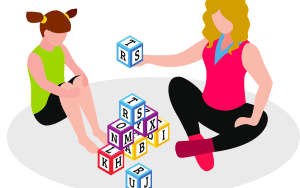

There is currently no definitive treatment for ASD and no known cure. Treatment aims to improve your child’s quality of life by minimizing the impact of autism spectrum disorder on his or her daily functioning.
Your kid can benefit significantly from early intervention in socialization, communication, functional ability, and behaviour during the preschool years.
Your child’s requirements may evolve over time, and there is a wide variety of therapies and interventions for autism spectrum conditions that can be daunting. Inquire with your doctor about recommendations and local resources.
Consult with professionals and assemble a team of carers to address your child’s needs after an autistic spectrum disorder diagnosis.
Here Are The Dietitian-Recommended Stress Relief Food
Possible Methods of Treatment Include:
1. Psychiatric Play Treatment
Using play as a means of education, play therapy is precisely what it sounds like. Autistic children are less likely to participate in imaginative play and more likely to play alone, repeating the same activities repeatedly.
Therefore, play therapy seeks to improve children’s communication and social skills and, ultimately, their openness to trying new things and using symbolic play.
Play therapy welcomes both children and their parents or guardians. Start with basic games like chase and tickle, bubble blowing, or sensory activities like swinging, sliding, or wiggling through a tube to build a bond with your child. Your child’s development may allow you to progress towards games involving turn-taking, cooperation, or pretend play.
2. Language Counselling
Some children with autism may have problems developing their verbal or linguistic abilities. Despite the complexity of the profession, parents can provide some speech and communication therapy with minimal training.
Speech therapy can also aid in developing nonverbal modes of communication through drawings, signs, and electronic devices.
3. Behaviour Modification Through ABA
Because of the emphasis placed on concrete, observable outcomes in ABA therapy for autistic patients is often considered the treatment of choice. While many clinicians promote ABA and report effectiveness, some autism advocates object to its dependence on behaviour modification ideas they believe are harmful.
While you can take classes and get certified in ABA, you can also conduct a brief online training programme and start using ABA techniques immediately in your own house. The most fundamental ideas might be easy to grasp, even for those without a formal education. It is possible to:
4. Pick a Lesson (Like How to Brush One’s Teeth) You’d Like to Impart.
Dissect the process into manageable chunks (find the toothbrush, wet it, etc.).
Walk your youngster through the initial procedure; you may need to do some work together. Have them do it as soon as you are confident in your child’s ability to complete the step independently.
If they succeed, they should be praised and given a token of appreciation. They should be asked again until they comply. Training should be repeated to ensure that your child understands the connection between your words and the behaviour you expect.
Teach the next stage once the first one has been mastered.
If your youngster is having trouble “chaining” the processes, a visual assistance such as a chart outlining the steps of your teaching abilities might be pretty helpful.
4. Floortime
Play therapy and floortime have many similarities; however, the latter is based on the premise that parents should strive to expand their autistic child’s “circles of communication” with others.
Simply put, when parents employ Floortime strategies, they nudge their children towards reciprocal communication. This facilitates the development of social skills and emotional relationships in autistic children.
During floortime, adults should participate in the kid’s play and allow the child to direct the play. Any adult (parent, guardian, elder sibling) can take charge of the Session. They may be done practically anywhere and typically last for around 20 minutes.
Online courses, videos, books, and even working with a professional Floortime therapist are great resources for parents interested in learning more about Floortime and implementing it in their homes.
5. Intervention for Relationship Growth (RDI).
RDI is a counselling method created for parents and other caretakers. Parents of autistic children can use this method to help their children learn social communication skills, much like Floortime does by relying on developmental theories.
Activities that promote adaptability in the child’s thinking and social interactions, such as dealing with change and seeing things from others’ points of view, are prioritized in this framework. RDI, in contrast to Floortime, involves working with a consultant and following a predetermined sequence of goals and activities.
RDI is an excellent option if you want to use a developmental treatment with your kid, prefer a structured programme, and have the financial resources to engage a consultant.
6. Treatment of Aggression through Parent-Child Interaction Therapy
Some children with autism display aggressive behaviours that make it highly challenging to leave the house or participate in everyday activities. The PCIT technique is delivered by qualified parents or guardians and is designed for children displaying aggressive behaviours.
As parents learn to set clear limits and establish control in the relationship, they can prevent the negative behaviours between them and their children from escalating.
PCIT is predicated on the premise that “effective limit-setting and consistency in discipline require a robust and secure attachment relationship, which in turn enhances mental well-being and benefits both the parent and child.
Cross-Examination of Different Diets
Dealing With a Plethora of Different Physical and Mental Health Issues
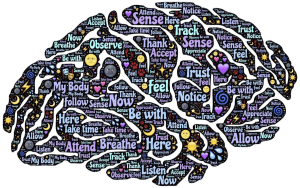

In addition to autism spectrum disorder, the following symptoms may also be present in children, adolescents, and adults:
- Concerns of a medical nature. Epilepsy, sleep abnormalities, limited food preferences, or gastrointestinal problems are just a few medical conditions that might affect children with autism spectrum disorder. Consult your child’s doctor about how you two can best deal with these issues.
- Individuals who are in the adolescent or young adult stage of development and have been diagnosed with autism spectrum disorder are a group that requires specialized attention and support. It is imperative to acknowledge and understand the distinct challenges that individuals with this diagnosis face and to provide appropriate resources and accommodations to help them navigate daily life.
- It is crucial to approach this demographic with sensitivity and understanding while recognising their strengths and abilities. May encounter difficulties when it comes to comprehending physical maturation as they make their way towards adulthood.
- Adolescence also brings about a more complex social environment and a possible decrease in tolerance for diversity in people. Teenagers’ challenging behaviour is not uncommon.
Individuals on the autism spectrum, including adults and adolescents, often face the challenge of dealing with concurrent mental health conditions, such as anxiety and depression. You can get assistance from your local hospital, a mental health expert, and local advocacy and support groups.
Arranging One’s Future
Individuals with autism have the potential to acclimate and flourish in their adult years. Still, they will likely always need some help. You may make this transition easier by planning for your child’s future options, such as career, college, living arrangement, independence, and the assistance they need to support themselves.
Unrecommended Therapies for Children With Autism
If you have autism, your brain doesn’t develop like other people’s. It’s not a disease, and there’s no treatment for it.
Your doctor or the local autism team may recommend specific methods for you to try if you have autism.
- Practice making a living
- Master the art of expression.
- Control symptoms of illness,
Whether they’re rooted in the body or the mind, such as pain or anxiety
- damaging behavior management
- However, some methods and procedures shouldn’t be used because:
- It’s a sham; they’re not real.
- Evidence suggests they have adverse effects.
No positive effects on autistic persons have been found, or there hasn’t been enough research.
False or Potentially Dangerous Autism Treatments
It’s important to know that not all products and services that promise to treat or cure autism are legitimate.
Some Examples are as Follows:
- GcMAF is an unapproved blood cell injection.
- Often referred to as “bleaching,” “chlorine dioxide,” or “Mineral Miracle Solution,”
- CEASE, which warns against using nutritional supplements in large doses and opposes immunizations,
- Blood chelation for the elimination of metal ions
- Secretin is a naturally occurring hormone.
- vitamins, minerals, and other nutritional supplements
- Camel’s milk, raw
- Avoid using any of these on autistic patients.
Additional Unrecommended Therapies
Only if there is strong evidence that it helps persons with autism will the NICE) recommend it.
The following methods are not advised for people with autism due to a lack of supporting research:
- Oxygen therapy in a pressurized chamber or hyperbaric oxygen therapy
- Neurofeedback for language and communication difficulties: training the brain to behave differently
- Auditory integration therapy for language disorders through musical practice
- Taking omega-3 fatty acids may help with insomnia.
- Diets that cut out certain foods (such the ketogenic and gluten-free diets)
- The hormone oxytocin
Autism Medication Therapy
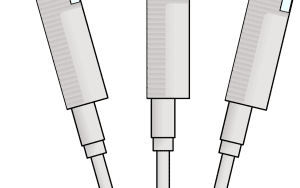

Currently, no drug can alleviate the symptoms of autism spectrum disorder (ASD) or treat the illness itself. However, certain behaviors associated with ASD can be helped by medication.
Medications used to treat autism or other disorders not approved by the FDA are not supported or endorsed by the National Institute of Child Health and Human Development (NICHD).
Medical professionals frequently prescribe medicine to address a patient’s problematic behavior, such as self-injury or violence. Reducing the severity of a symptom frees up mental resources that can be used towards other goals, such as education and socialization for a person with autism. Combining medicine with behavioral therapy is the most effective treatment method.
- Some antipsychotic medications, such as risperidone and aripiprazole, have been licensed by the FDA to manage irritability in children with ASD.2 Medication options for children with ASD should be discussed between parents and their kid’s healthcare providers.
- Although the FDA has not approved other medications to treat autism, they are widely used to alleviate the disorder’s symptoms. Minors cannot legally purchase or use many drugs on this list.
- There are potential dangers with any drug. Families should collaborate closely with their children’s healthcare practitioners to ensure proper and safe drug use.
- Inhibitors of serotonin reuptake, or SSRIs, are a class of antidepressants.
- Some chemical imbalances in the body are responsible for mental health issues that can be helped by this class of antidepressants.
- Anxiety, impatience, tantrums, and violent behavior may all be lowered by SSRIs. At the same time, improved eye contact is a possible side effect.
Tricyclics
These medications are categorized as antidepressants and are utilized to address psychological conditions, such as major depressive disorder and obsessive-compulsive disorder.
Minor adverse effects are more common with these medicines than with SSRIs. For some patients and conditions, they can be more beneficial than SSRIs.
Antipsychotic and Other Psychoactive Drugs
The brains of people who use these drugs are altered in many ways. The antipsychotic, antipsychotic medicine risperidone, has been licensed in children and adolescents with autism ages 5 to 16.
Medication for autism has been shown to alleviate symptoms such as agitation, stereotyping, and hostility.
Stimulants
Medication from this class can help autistic persons pay attention for extended periods and curb their hyperactivity. Those who just have mild ASD symptoms benefit the most from them.
Calm-Inducing Pharmaceuticals
Anxiety and panic disorders are common in people with ASD, although they can be treated with this class of drugs.
Anticonvulsants
Epilepsy and other seizure disorders are treated using these pharmaceuticals. (During a seizure, the person may jerk or stare blankly.)
Seizures or seizure disorders affect about a third of people with autism symptoms.
Is it Possible to Prevent Autism?
Researchers have found that exposure to certain environmental conditions may increase the likelihood of developing autism spectrum disorder (ASD).
Chemicals in the Air
Children of mothers who were exposed to high levels of pollution during pregnancy had twice the risk of developing autistic spectrum disorder, according to a study conducted at Harvard. Women need to limit their exposure to air pollution from motor vehicles.
There are many causes of Autism, not only air pollution from cars. Danish researchers have identified possible evidence linking Autism to exposure to elevated amounts of sulfur dioxide in the shipping industry.
Expectant mothers can protect their unborn children from exposure to airborne pollutants by
- using concealment
- Putting petrol in their car late at night
- When air quality is poor, it’s best to stay inside.
- Whenever possible, you should avoid exercising near busy streets.
- Availability of Potable Water
Researchers have found evidence that pollutants in drinking water may contribute to elevated autism prevalence in some areas. Lead and aluminum are two examples of heavy metals known to cause health problems and hinder mental growth. Pesticides and manganese can also make their way into our water supply.
It is also possible for pharmaceutical medications to enter the water supply. There is evidence that antidepressants in the water supply may increase the likelihood of Autism.
Pharmaceuticals excreted through human feces or flushed down the toilet can enter the water supply if the water source is downstream from a water treatment plant.
To avoid ingesting these harmful compounds, using a water filter or drinking only filtered water is recommended. Expectant mothers should be extremely cautious about consuming water from the tap.
Making the Change to Eco-Friendly Toiletries


Women can use eco-friendly personal care products to reduce their vulnerability to dangers like toxic chemicals. In prenatal, exposure to phthalate has been associated with autistic features in males, according to a study published in Environmental Health Perspectives.
Cosmetics and other items include phthalates, chemicals known to impair hormone function. It is imperative to ensure adequate intake of folic acid. Before and throughout gestation, it may protect against the detrimental consequences of phthalates and diminish the likelihood of developing autism.
Is it feasible for an individual’s dietary intake to mitigate their susceptibility to developing Autism?
The likelihood of having a child with autism spectrum disorder (ASD) can be reduced. In contrast, Autism may not be preventable. By eating an organic, colorful diet high in green vegetables and fruits rich in antioxidants, women can reduce their risk of Autism. At least 80 grams of protein daily from lean sources such as:
- turkey
- chicken
- nuts
“White foods,” which include bread and sugar, are discouraged by many health experts. White foods may have undergone extensive processing, making them less nutritious than their whole-food equivalents. Many nutrients are lost in the refining process.
Aside Folique
According to the United States, pregnant women are recommended to supplement their daily diets with 400 to 800 mcg of folic acid. This B vitamin is crucial to developing mental and spinal health and essential to a healthy pregnancy.
Research has shown that folic acid intake during pregnancy can reduce the risk for autism spectrum disorder. Therefore, it is highly advisable for expecting mothers to consider incorporating this supplement into their daily routine.
Mineral D3
Vitamin D supplementation has been associated with enhanced brain development in pregnancy. Mothers with low vitamin D levels midway through their pregnancies had 2.42 times the risk of having a child with autism spectrum disorder compared to mothers with normal vitamin D levels.
There is a deep relationship between autism spectrum disorder (ASD) and vitamin D insufficiency, a subject of interest in recent years. Several studies have suggested a possible association between vitamin D levels in pregnant mothers and the risk of ASD in their offspring. Additionally, evidence indicates that vitamin D supplementation could improve some of the symptoms associated with ASD.
Further research is necessary to fully understand the relationship between vitamin D and ASD. However, these findings suggest that maintaining adequate vitamin D levels may be beneficial in reducing the risk and managing the symptoms of ASD. The disorder remains uncertain and requires further investigation. Additional research is necessary to establish a potential correlation between the two factors.
Alpha-Linolenic Acid


Expectant mothers must incorporate omega-3 fatty acids into their diets. Research conducted by the Harvard School of Public Health has revealed that an imbalance in omega fatty acids during pregnancy may lead to an elevated risk of autism spectrum condition.
Therefore, It is of utmost importance for expectant mothers to ensure sufficient intake of omega-3 fatty acids to attain optimal fetal development. They discovered that a fetus’s risk of being born with ASD increases by 53% if the mother does not get enough omega-3 fatty acids during pregnancy.
Gain of Pregnancy Pounds
Gaining weight during pregnancy is also associated with an increased risk of ASD. In the context of pregnancy, a healthy range of weight gain for expectant mothers is typically between 25 and 35 pounds.
This range has been established as a suitable guideline by medical professionals. It is intended to promote the well-being of the mother and the developing fetus by adhering to this recommended weight gain range.
The official journal of the American Academy of Paediatrics published a study that suggested a connection between maternal pregnancy weight gain and ASD.
Researchers discovered that maternal weight gain during pregnancy, but not baseline BMI, significantly raised the risk of Autism in offspring. This study provides further evidence that Autism may have a prenatal origin.
Maintaining Your Health During Pregnancy to Reduce the Risk of Autism
Visiting your primary care physician and obstetrician regularly for checkups is crucial.
Preborn children are profoundly affected by their mothers’ health conditions throughout pregnancy. Mothers should protect their children from the flu and German measles by becoming immunized.
The MIND Institute has discovered that viral infections can disrupt neuronal connections in the developing brain.
Diabetic Maternal Weight Gain
Taking every possible measure to prevent gestational diabetes can reduce the likelihood of Autism. Autism has been connected to maternal obesity and diabetes. Inflammation caused by impaired immunological signaling is a symptom of both illnesses.
The risk of having a child diagnosed with Autism is higher in women who are overweight or obese before pregnancy, according to a meta-analysis of 32 publications published in 2018.
Meds that Need a Prescription
Women expecting should only take prescribed medications while under close medical care. Women were given thalidomide to treat morning sickness in the 1950s and 1960s. The effects on fetuses were discovered much later.
Valproate is prescribed to patients suffering from epilepsy and bipolar disorder. Prenatal exposure is also associated with an increased risk of Autism.
The effectiveness of several other drugs, including antidepressants, is still up for debate. There may be a genetic link between antidepressants and Autism. Still, it’s difficult to tell because the prescription is used to treat an underlying mental health condition.
Amalgam (Mercury) Fillings
It may be wise to get any amalgam fillings (which contain mercury) removed before trying to conceive. Mercury fillings were commonly utilized by dentists in the past.
It is common knowledge that mercury is toxic and should never be used. Suppose a woman is pregnant or attempting to conceive and has mercury fillings. In that case, she should discuss possibly having them removed with her dentist.
Induced Labour
Avoiding unneeded cesarean sections can help, as giving birth naturally improves a baby’s brain function. In 2016, researchers in Saudi Arabia conducted a case study. Their findings provided further evidence linking C-sections to ASD.
These findings corroborate those of similar studies. Complications during childbirth almost often necessitate a cesarean section. In light of these findings, it seems prudent to avoid performing cesarean sections until absolutely essential.
Age of Parents
The journal Molecular Psychiatry recently published research highlighting that children born to mothers in their forties and fathers over 50 have a greater susceptibility to developing Autism. These findings substantiate previous studies that have also established a correlation between parental age and Autism.
Fathers in their 40s and 50s may have a greater chance of having children with autism spectrum disorder due to the high rate of spontaneous mutations in their sperm. Mutations can develop while sperm cells divide and their DNA is duplicated.
Maternal age and the possibility of Autism have been the subject of fewer investigations. To a lesser extent than sperm cells, egg cells can divide and potentially pass on mutations. Researchers in California looked at birth certificates from 1990 to 1999 for their study.
There were over 12,000 incidences of Autism and over 5 million births. Women over the age of 40 had a 77% increased risk of having a child diagnosed with Autism compared to women under the age of 25. Age hurts that proportion.
Effectively, expecting mothers can do everything possible to prevent Autism through good pregnancy preparation and health-conscious practices.
Enhance your knowledge with our informative article visit here,




